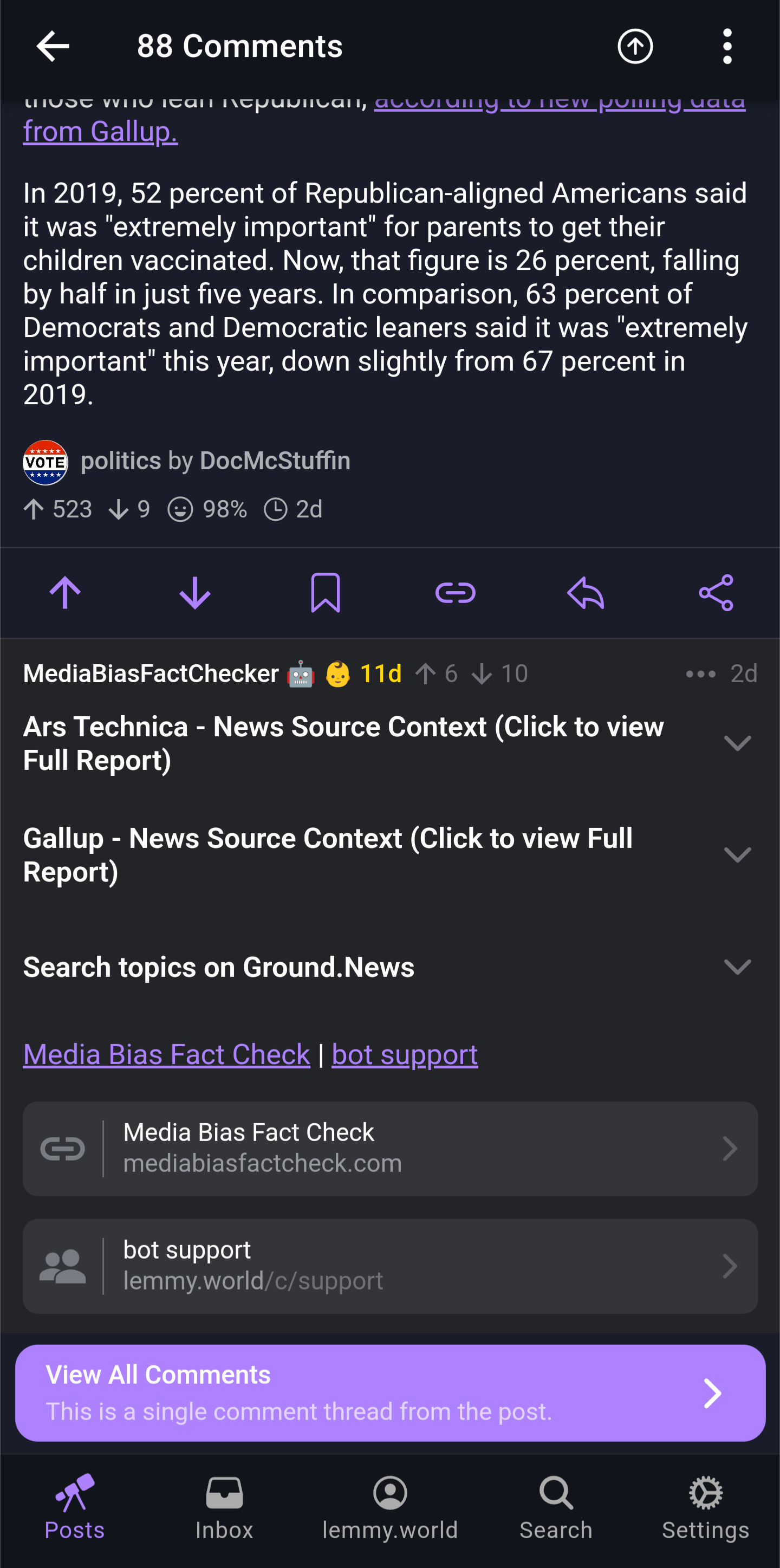- 6 Posts
- 132 Comments

 3·24 days ago
3·24 days agoThai article reminded me to buy (and hopefully beat) KCD before KCDII comes out in Feb 2025.
On the Xbox store, the DLC bundle (no game) was normally $20, but 75% off so it was only $5. The game+DLC bundle was normally $40, but it was 90% off so it was only $4. Easy choice, even if I already had the game and no DLC

 10·24 days ago
10·24 days agoI have no idea how to make beer…

 11·29 days ago
11·29 days agoand a hefty tip to the waiter.
And I detest tipping culture, though I of course don’t fault the wait staff. I’d rather go to a local joint that pays its people appropriately…which are hard to find, admittedly.

 7·1 month ago
7·1 month agoAnker Prime Charger (250W, 6 Ports, GaNPrime): $169.99 but there’s a $30 code that shows up for me, which brings it to one penny below your $140 too steep threshold.

 8·1 month ago
8·1 month agoCalyxOS lets me run most safety net stuff…
SafetyNet is deprecated.
https://developer.android.com/privacy-and-security/safetynet/deprecation-timeline

 7·1 month ago
7·1 month agoI don’t even use proprietary apps so most if the “security features” aren’t even useful to me
So only proprietary apps may have malware? Malware aside, only proprietary apps may have bugs that can be exploited? And all nonproprietary apps are perfectly safe? But seriously, there is so much wrong with that thinking.
Apps aside, GrapheneOS protects the actual OS and is kept up to date, much quicker than pretty much any other variant.
It is overly complex for no benefit to me.
What’s overly complex? Contact and storage scope I mentioned? You don’t have to use it. Separate profiles for work I mentioned? Again, don’t have to use it. GrapheneOS is one of the closest OSes to AOSP that I’ve seen. You could even just install the Play Store (which is in a sandbox by default, with no root, and you don’t have to do anything to specify that), only use the owner profile, and you get all of the security benefits with no extra work. You introducing F-Droid and using all nonproprietary apps is more complex than GrapheneOS out of the box.

 6·1 month ago
6·1 month agoGraphene sucks the life of android in my humble option.
What’s not “fun” or lifeless about it? It’s a phone. I use it exactly as I would a normal Pixel, with the exception of having the convenience of Google Wallet.
Everything is about security with anything else being second.
Would you rather it be all about fun/having life with everything else being second? That doesn’t sound safe. And I’m still confused about you saying it having no life.
I will say what I do differently vs a normal Pixel, is I use the storage scopes and lock certain apps to certain folders as well as contact scopes to lock certain apps to only see certain people. I don’t use my phone for work, but if I did, that would be a separate profile/user.

 1·1 month ago
1·1 month agoThis is what i see on connect.
I’d take this feedback to your app dev. Here’s Voyager and Tesseract.



 9·1 month ago
9·1 month agoBe sure to take the company’s last $5000 instead.
Well, now I need to find a company. Oh, one with $5000.

 7·1 month ago
7·1 month agoWith Graphene, the recommended way is to use separate profiles, not Shelter or similar apps. Check out the official Graphene account on their forum:
https://discuss.grapheneos.org/d/12503-shelter-versus-native-gos-app-isolation-tradeoffs/10

 3·1 month ago
3·1 month agoThe pixel 8 was exciting because it was the 1st android smartphone which broke the usual 5 years of update cycle and jumped to 7 years.
The Pixel 8 also has MTE support.
Pixel 8 and Pixel 8 Pro are ARMv9 devices supporting hardware memory tagging…Hardware memory tagging is going to provide a massive increase to protection against remote exploitation for GrapheneOS users. It’s the biggest security feature we’ll be shipping since we started in 2014.
https://discuss.grapheneos.org/d/8439-mte-support-status-for-grapheneos
They are expensive
Sometimes you get what you pay for, and…
I don’t want to give money to Google
I get that, but your purchase (the entire Pixel department, to be honest) is a drop in the ocean to their profits. They won’t notice you not buying one at all. You’re handicapping yourself in the mobile security arena (not being able to install GrapheneOS) to take the high ground and not effect a tech giant.
That aside, if you really don’t want to give Google, buy one from a reseller and not from the Google Store.
Firefox with uBlock Origin should always be your starting point.
Except Firefox is not secure on Android.
Avoid Gecko-based browsers like Firefox as they’re currently much more vulnerable to exploitation and inherently add a huge amount of attack surface. Gecko doesn’t have a WebView implementation (GeckoView is not a WebView implementation), so it has to be used alongside the Chromium-based WebView rather than instead of Chromium, which means having the remote attack surface of two separate browser engines instead of only one. Firefox / Gecko also bypass or cripple a fair bit of the upstream and GrapheneOS hardening work for apps. Worst of all, Firefox does not have internal sandboxing on Android. This is despite the fact that Chromium semantic sandbox layer on Android is implemented via the OS isolatedProcess feature, which is a very easy to use boolean property for app service processes to provide strong isolation with only the ability to communicate with the app running them via the standard service API.

 4·2 months ago
4·2 months agoI know it does but you said “That kills the point of LibreTube bruh.” So if you can use a VPN, and there’s no point to slowing it down…it doesn’t sound like disabling it “kills the point” at all, like you first said.
Basically, your two messages contradict each other.

 3·2 months ago
3·2 months agoThe sole point of LibreTube is to use piped proxies? Odd, you figure they wouldn’t include an option to make their entire app pointless.
- The video is a return to the creator’s previous “Top 5 Linux Apps” monthly series, which was popular in the past.
- The first app highlighted is Boxy, a graphic design tool for creating SVG images and logos, with a user-friendly interface compared to more complex tools like Inkscape.
- The second app is Eyedropper, a color picker tool that works well in Wayland environments and allows users to get color codes in various formats.
- The third app is Iotas, a simple, GTK-based note-taking app with Nextcloud integration, focused on basic note-taking functionality without advanced features.
- The fourth app is Plexamp, an electron-based desktop music player that provides access to the user’s Plex music library.
- The fifth app is Sigil, a niche tool for editing metadata in eBook (EPUB) files, particularly useful for adding series information to support self-hosted ebook platforms like Calibre.
- The creator acknowledges that Sigil has some quirks, working better in KDE than GNOME environments.
- The creator encourages viewers to provide suggestions for future “Top 5 Linux Apps” videos in the comments.
- The creator provides links to their social media and support platforms, including Mastodon, Odyssey, and Patreon.
- The overall tone is one of enthusiasm for sharing useful Linux applications with the audience, while also acknowledging the niche nature of some of the recommendations.
Courtesy of Kagi’s Universal Summarizer.

 3·2 months ago
3·2 months agoNope, I’m out.
From the person you replied to, emphasis mine:
You could also start with just one of these
Do they all really? I know GrapheneOS does, and I think DivestOS even says “use my OS to stay as up to date as possible, but if you have a current/supported Pixel, use GrapheneOS instead for superior security.” But I don’t recall other OSes really going “we’re more secure than GrapheneOS and here’s why.”
if used for work…Features? Don’t care.
Most organizations care about maintaining document compatibility, especially formatting, and that usually means Office365. Microsoft is notorious for publishing a standard and then ignoring their own standard, making it exceedingly difficult to use other office suites.
I’ve heard OnlyOffice does the best at maintaining compatibility.








To be fair, while you may not be getting money in it’s direct from Google, they are providing you a service which costs money.